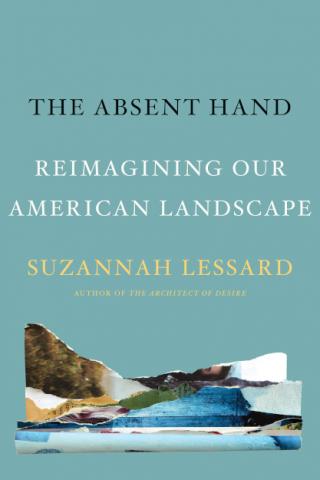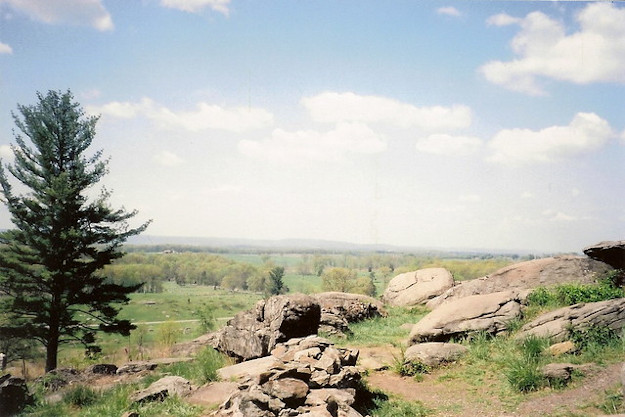Sleuthing American Landscapes With Suzanne Lessard in ‘The Absent Hand’

The Absent Hand: Reimagining Our American Landscape
By Suzanne Lessard
Counterpoint
320 pages
How often these days do we look up from our mobile devices and seriously examine the landscape around us? Suzanne Lessard, former staff writer at the New Yorker, takes on this challenge in her new book, The Absent Hand, seeking to refresh perceptions—hers and ours—of the American landscape.
“Landscape to me is different from nature alone, from wilderness,” she writes. “Landscape is what arises from the hand of work as we make our living on the planet and our relation to one another as we do so. The hand of work creates in terrain a kind of syntax, an arrangement of interrelating parts, a composition that has a human meaning that is always, in part, beyond words.”
Armed with a self-proclaimed mission to “sleuth” American ground (“to understand the change in landscape form and meaning and what it could tell us about ourselves as a society now”), Lessard embarks on numerous journeys, described in the series of essays that make up The Absent Hand. Destinations range from her home village of Rensselaerville, New York, and the Civil War battlefield of Gettysburg to King of Prussia Mall in Pennsylvania and Truth or Consequences, New Mexico.
Her method of inquiry consists of traveling to these far-flung destinations, where she “did my usual—pursued little stories, talked to people, got to know some of them, got up-to-date on local issues, and read old newspapers.”

But what promises to be an eye-opening and potentially revelatory reworking of our downtrodden perceptions—much like what occurred with Rachel Carson’s Silent Spring or Annie Dillard’s Pilgrim at Tinker Creek—often emerges in a dense thicket of prose that can be difficult to follow.
Consider, for example, Lessard’s early ruminations on Gettysburg:
“Is not knowing ourselves as fully as possible the most valuable aspect of all kinds of preservation? And is not landscape itself—whether purposefully preserved or merely lasting beyond its time—also, ultimately, most precious to us not as an elegiac reminder of the past but as a mirror of ourselves, then and now, in all our complicated humanity?”
An intriguing idea, to be sure, but at risk of being consumed by the words around it.
A gifted, erudite writer, Lessard makes few concessions to simplicity of expression. Her approach is cerebral, spiritual, and almost always conducted with an earnestness that might have been leavened with intermittent moments of humor. She’s after bigger conceptual game than a mere travelogue, but doesn’t always serve as the clearest, most effective guide for her own abstract forays.

On the other hand, Lessard does achieve the goal of inhabiting her landscapes and making them come alive for us. In New Mexico, she visits Trinity, site of the earliest testing grounds of the atomic bomb, where she deftly captures the unique loneliness of the desert countryside:
“Mostly the wind blew, buffeting my ears. On one of the wooden window frames, there was a loose piece of wood swinging on a nail, tappety-tap-tap-tapping in the wind. My notebook fluttered, and then the wind sounded as in pines, though no pines were around, and the sun warmed my back, and there were hawks in the sky, and then when the wind got stiller, there was a deeper sound in it.”
Readers seeking a fresh look at landscape, delivered in lyrical and evocative language, will find much to admire in The Absent Hand.
Author Bio:
Lee Polevoi, Highbrow Magazine’s chief book critic, recently completed a novel, The Confessions of Gabriel Ash.
For Highbrow Magazine
Image Sources:
Ken Lund, Flickr (Creative Commons)
Li2nmd (Wikimedia, Creative Commons)
Cover Photo: Maxpixel.net (Creative Commons)






























































































































































































































































































































